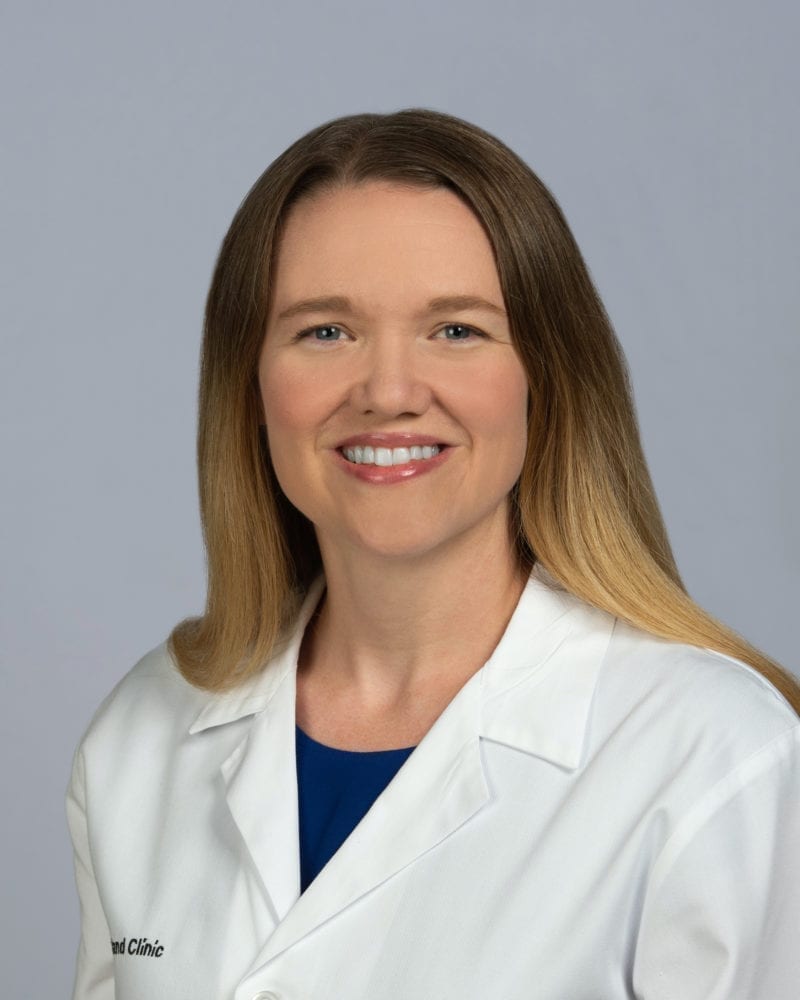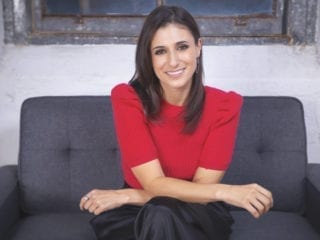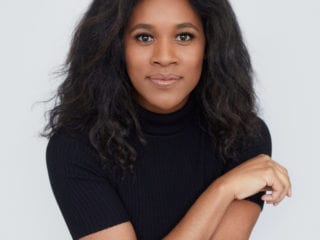“Real Women, Real Work” is a Darling series about everyday women who work in various fields including business, entertainment, science and education. We want to get to know the WHY behind their WHAT and get an inside look into different industries.
Dr. Jessica Caldwell is making history in women’s brain health. As the Director of the Women’s Alzheimer’s Prevention Center at Cleveland Clinic, she runs the first-ever women’s Alzheimer’s prevention clinic in the nation, designed to prioritize women’s brain health.
Located within Cleveland Clinic Lou Ruvo Center for Brain Health in Las Vegas, NV, the Women’s Alzheimer’s Prevention Center was ideated by Maria Shriver as a resource for women in Alzheimer’s research and prevention. Currently, it is a three-year pilot funded, in large part, by philanthropy from the Cleveland Clinic and Shriver’s nonprofit, The Women’s Alzheimer’s Movement. Dr. Caldwell and her team bring their expertise on the medical, psychological, stress-related and lifestyle impacts on women’s health to better understand women’s brain health challenges.
Today, two-thirds of the 5.8 million Americans living with Alzheimer’s disease are women, yet many of these cases could be prevented through risk-reduction strategies. There is currently no cure for Alzheimer’s disease. The Women’s Alzheimer’s Prevention Center focuses on best available solutions for women, who are most vulnerable to the hardships of Alzheimer’s disease. Dr. Caldwell especially hopes to bring services to women of color and low-income patients.
Today, two-thirds of the 5.8 million Americans living with Alzheimer’s disease are women.
The Women’s Alzheimer’s Prevention Center offers women-specific resources, medical care, research and caregiving support. Most of the clinic’s services are free. There are some costs for patients, which are charged to insurance. If insurance doesn’t cover it, then it’s out-of-pocket for patients.
“We are hoping that we are around longer than three years and that we are able to continue for the long haul,” Dr. Caldwell explained.
Darling got to chat with Dr. Caldwell about her work at The Women’s Alzheimer’s Prevention Center and her passion to bring greater awareness to Alzheimer’s disease and women’s prevention.

Growing up, what did you imagine you would be?
I think I wanted to be a writer. I was always a reader from a young age.
Even though that didn’t turn out to be my career, it did turn out to be a part of what I do. Whether it’s writing a recommendation or a medical evaluation for a patient or writing research studies, a lot of my work involves writing. In school, I studied creative writing and psychology. So I have always had a dual interest.
You are a neuropsychologist with expertise in brain health, memory, aging and women’s risks for Alzheimer’s disease. Break that down for me.
I am a neuropsychologist. A part of my work is studying the brain—whether that’s problems with attention or speed or studying Alzheimer’s. We examine what a patient’s thinking looks like and whether or not it matches up with signs of Alzheimer’s.
With The Women’s Alzheimer’s Prevention Center, I am meeting with women who are at risk of Alzheimer’s and helping them understand the risk factors. Then, in the final part of my week, I do research. We know that women make up about two-thirds of people who have Alzheimer’s right now, but we don’t know why that is.
We know that women make up about two-thirds of people who have Alzheimer’s, but we don’t know why that is.
I look at MRI scans to examine brain structure. I study how men’s and women’s brains are different and how that might lead them to be at greater risk for Alzheimer’s. Clinical Alzheimer’s prevention and research on prevention is where I spend most of my time.
How did you get into brain health? Was there a specific sector of health and wellness you were always interested in?
My interest has changed over time. I have always been interested in brain health and brain ill-health (why things go wrong with the brain). I have also always been interested in why men’s and women’s brains are different. I started out studying why girls’ and boys’ brains are different and why children’s behaviors early on might be a sign of problems to come in adolescence.
The study of sex differences and clinical diagnosis of Alzheimer’s disease was always a passion of mine. So when Maria Shriver came to our center and asked if there was someone who might be interested in taking on leading the The Women’s Alzheimer’s Movement Prevention Center, I knew I would be the right choice.
Stepping into the role of directing the center has been a big change but a good one. In the past two years, I have learned a lot about what it takes to run a team—how to budget properly, how to do outreach and how to keep systems moving smoothly. Most of these management and leadership skills are new to me, but it’s all been really exciting!
At The Women’s Alzheimer’s Prevention Center, we are a small team. It’s pretty much a four-person team that sees every patient. I am the director and also a doctor who meets with patients. Ida Crocker-Sabbagh, MD, FAAFP, is a board certified specialist in family medicine. She meets with patients about their overall medical health. Lana Garza is our Medical Assistant. We also have Nikki Kaplan, who is our Research and Administrative Coordinator, all in one person.
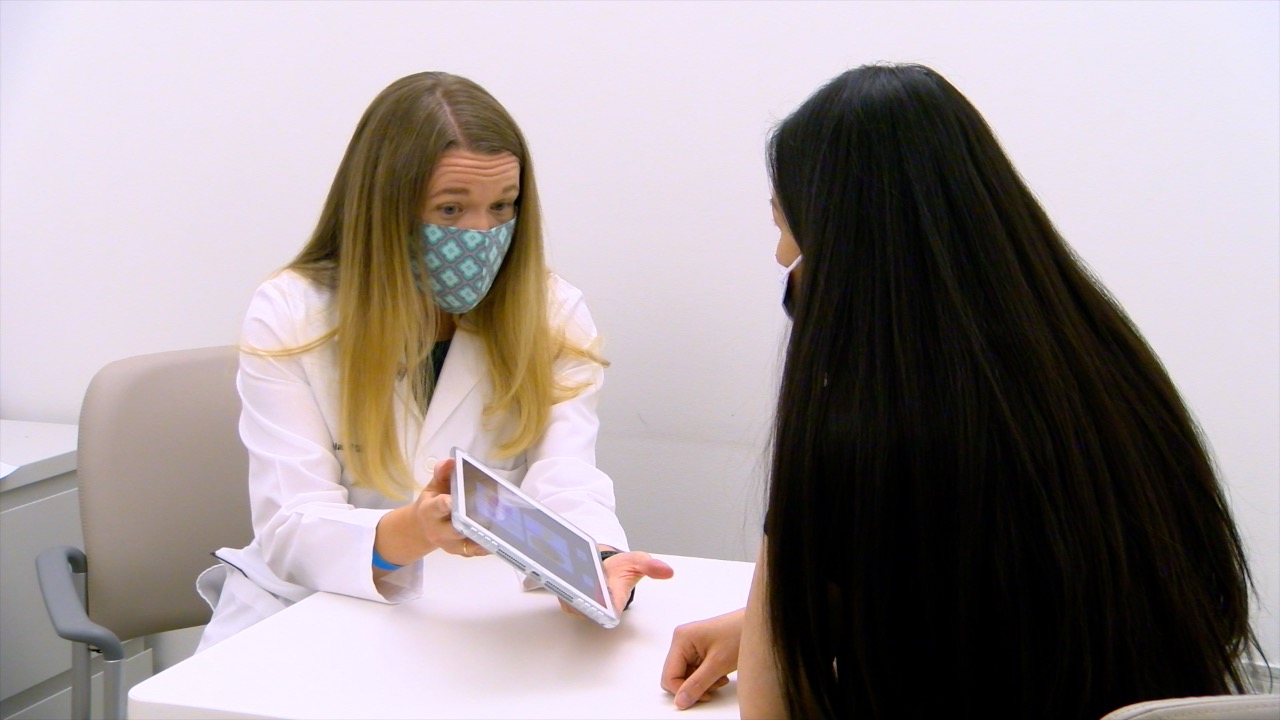
You run The Women’s Alzheimer’s Movement Prevention Center at Cleveland Clinic, the first Alzheimer’s prevention clinic designed just for women. What is the personal significance of this position for you?
Not only do I feel like I am playing an important role in potentially helping women reduce their risk, but I also come at this from a women’s-disparities-in-the-medical-system standpoint. It’s widely known that women often don’t receive the same medical care as men and don’t feel as heard by doctors as men do.
Women often don’t receive the same medical care as men and don’t feel as heard by doctors as men do.
I am passionate about women being involved in their health journeys. Helping women gain access to awareness about brain health and Alzheimer’s and running a program like this allows me to do that. Plus, all of our staff are women! So helping women is something we are particularly passionate about.
The clinic’s programming focuses a lot on prevention. What are some lifestyle habits that have proved beneficial in promoting brain health among women?
Exercise is No. 1. People who exercise at a higher level or people who exercise throughout their lives do better as far as memory and cognition as they age. Exercise can also help people be less stressed and improve memory directly.
Another important one is getting enough sleep. A lot of people short-change themselves on sleep when they get busy. Sleep is important for cementing memories in long-term storage. Exercise and sleep are the two necessary lifestyle habits I talk about with every patient.
Exercise and sleep are the two necessary lifestyle habits I talk about with every patient.
Alzheimer’s disease impacts women disproportionately, even more so women of color. How do these realities inform your work and why you do what you do?
The reality that Alzheimer’s affects more women of color is always in the back of my mind. I am always tracking who is coming to my clinic. For Black women, the risk is about twice as for white women. It is important that the people we serve are the people suffering from these diseases. We have to make sure our service is something that people know about, not just white women.
We have to make sure our service is something that people know about, not just white women.
In decades past, women weren’t really discussed in terms of Alzheimer’s disease. In the present day, if we don’t include women of color, it’ll be the same problem as decades past when we excluded women from the conversation. I am lucky that we have a great Community Advisory Board here from one of our other research studies to get the word out more in communities of color and bring this message of awareness.
Another important thing we do is give out questionnaires to patients. It is important for us to know whether or not what we are doing is hitting the mark and if patients are able to use the recommendations we give them. Access to Alzheimer’s disease resources could vary based on race, ethnicity or socioeconomic status. I want to make sure that this care—what we are doing at the clinic—works for people.
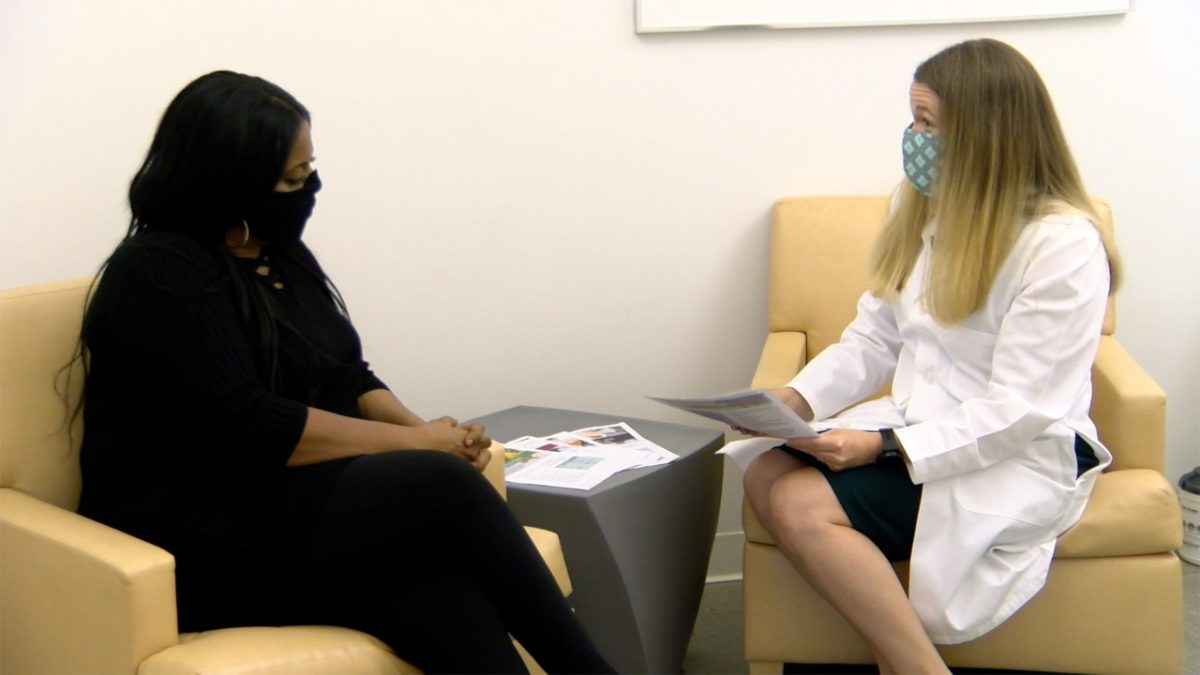
For someone with a family history of Alzheimer’s or who is concerned about their risk, what can they expect when coming into the clinic?
Before coming in, a patient will fill out a lot of questionnaires online. When they arrive, they get their weight and height measured, like a normal doctor’s appointment and also take some memory tests. Then, they would have a two hour discussion with myself and the family medicine physician to discuss their results.
The patient goes home with a well-written list of recommendations of where to focus as far as risk areas to work on. We check in with patients throughout the year to see if those recommendations are of good use. For the most part, however, a woman is kind of on her own for the year to implement those changes.
We understand that making lifestyle changes is hard. We want to give women the tools to succeed. The clinic also includes an optional nutrition class and physical activity class catered to better brain health, which we will begin shortly.
The Women’s Alzheimer’s Movement Prevention Center at Cleveland Clinic is pioneering women-specific medical research and prevention related to Alzheimer’s. What do you hope to see come out of this work?
My hope is that we bring the clinic to more patients, that we can expand and that we can convince insurance carriers that it’s worth it to cover this service. I also hope that we can work with other leaders in this field. Collaborative research between centers is beneficial to prove what lifestyles habits improve brain health statistics.
My hope is that we bring the clinic to more patients, that we can expand…that we can work with other leaders in this field.

What advice would you give to a young woman interested in pursuing the medical field?
For the woman interested in pursuing a career in clinical psychology or research, just explore all of those topics in college. See what really speaks to you. They are such broad fields, and it gets even broader if you include medicine in that mix.
Also, know that when you choose a graduate or medical program, that’s not the rest of your career. You can always take that knowledge and apply it to something else. Just make sure it’s something you can do for five or seven years. You never know where your career might take you after that.
Knowing what you know now about life and career, what advice would you give to your younger self?
I would advise myself to sleep more. That’s something I would tell myself and anyone in their early 20s!
I think I would also say, “Think more flexibly about what you can do with your career.” When I went into graduate school, I thought my only option was to be a professor. There’s so much more you can do. Stay flexible.
To learn more about The Women’s Alzheimer’s Movement Prevention Center at Cleveland Clinic, visit their website or follow them on Instagram.
Feature image via Women’s Alzheimer’s Movement Prevention Center at Cleveland Clinic
